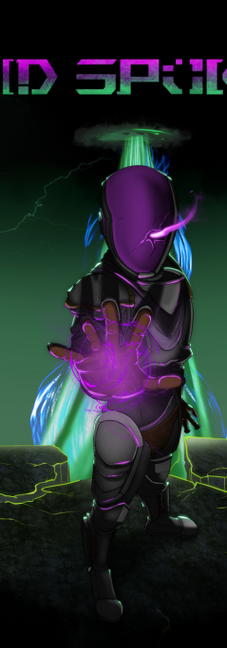This is a living page, content on this page will be moved around and sometimes move to a different page as time goes on.
RECENT WORK
PROGRAMMING
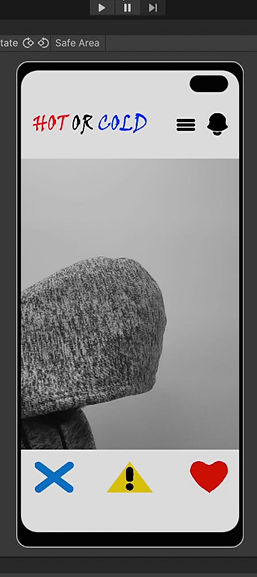
Fake Dating App for Better Together
I used the Unity game engine to develop the app to utilize its additional tools and easy mobile development pipeline. This made development easy, as I can also use the Timeline add-on to create the animations requested for the show. I also used Clip Art Studio (an application similar to Adobe Photoshop) to create the icons and title seen in the app.
Before I started any app development, I talked with the director to discuss what screens (phases) that app needed. I was able to organize my plan to develop the app. I first developed the swipe mechanic as that is the main feature of the app. This is the main reason why I choose Unity as they allow easy touch input implementation and all I had to do was just implement the actions. If you are a programmer, then you most likely caught the irony in what I just said and know that this was not the only thing and that there was also issues with the swipe mechanic.
As you probably noticed, things didn't go smoothly with the swiping mechanic. It wasn't too bad as I had to implement several functions to the swiping mechanic including:
- a speed dampener to make sure images don't fly off the screen
- a swiping threshold to allow the images to swipe of and change to the next image/profile
- a function to trigger the animation when the selected picture gets swiped right.
It started off with three screens: The main screen, the match screen, and the bio screen. Later on the bio screen was removed by the directors request.
The app would allow the actor using it to swipe through photos left and right to simulate liking and passing and getting matched similar to the features seen in a real dating app. The match screen will only show when the actor swipes right on the selected photo, any other picture swiped right won't trigger the transition.
In case I wasn't at the filming location (I wasn't) for shooting. I created two hidden buttons for the director to use to reset if needed. I created two buttons: one to reset the entire app and one to bring up the match screen.
Programming the swiping mechanic wasn't too hard as i only modify the x coordinates when ever the user holds down and moves on the screen. However, that introduced a new problem where the image won't stop moving when the swipe input stops and enters a hold position.
That's when I realized that the input is read as if it was a slider, this meant that it takes the value of the input position difference (where the finger was then and now) and continues to use that value on repeat.
I was able to fix this by checking if the users input state is holding at it's current position and resetting the value at that point. This allows the user to be able to move the image freely along the x axis without having to worry about the image flying off. After I completed the swiping mechanic, I then added in a speed damper variable to slow the image movement down as well as a threshold variable to check if the user has moved the image far enough in a given direction to move on to the next profile pic. These values were adjusted to the directors request before the shooting date.
Working with images were a bit more calm as some features didn't require much work while others took some adjusting. Getting the images to change wasn't hard as I just made an array to house the images while I used two sprite renders to show the current and following image. After the current picture is swiped, the front image changes to the back image before returning to it's original position and getting the new image to replace the previous back image. That part was easy for the most part, but then came the issue of the image sizes.
Most of the images weren't the same size, which lead to some of the back images popping out from behind the front image. I was able to resolve the issue by using sprite masks to make sure all the images were the same size and to keep the illusion as well. While using one sprite mask would have been a simple bandage to the problem, it only works if the images don't move.When the user moves the front picture, the sprite mask doesn't move with it, leading to a fun surprise of a larger image. I was able to quickly fix this by adding a sprite mask as a child object to each image which fixed the problem.
In order for me to make the match screen, I had to use Unity's timeline add-on to create the animation. the main reason is that while unity does have a built in animation tool, it only works when your animating one object. If I was to use the animation tool, I would have had to make multiple animations which not only will be messy but will also lead to more complications down the line. Timelines however, are meant for cutscenes and can use several objects in one timeline. This made it so I can use multiple pieces to create the match screen more effectively.
While developing the timeline, I soon learned that you need to be very careful with the pieces in the scene. Because of the requests the director asked for in the app, I was able to keep everything within one scene and have everything organized in groups for where their used. But while developing the match screen, I realized that the sprite masks I used in the swiping screen was causing the match sprite masks to not work. I was able to resolve this by disabling the sprite masks on the swipe screen at certain times to make it flow better and resolve the problem.
The last thing I had to take into account is reshooting. What I mean is how will the crew be able to reset the app without having to close and reopen it every time. I wasn't going to be at the site for the shooting and even though it wasn't hard to close and reopen an app, it seemed counter intuitive to have to do that so I had to come up with a way to make the process a bit more easier.
This was actually pretty easy to do once I remembered a previous problem I had. Remember, when I said that I had to disable the sprite masks for the match screen? Well after that, I forgot about that lesson and ran into a bug where an invisible button cause the app to constantly reset itself. It took me a couple of days to realize this and when I found it, you have no idea about how far my sanity went when I realized this. The reason why added this here and not the match screen page is because that very issue became the solution for a more series-friendly app.
I created three buttons: two are found on the swiping page with one attached to the title text allowing a complete reset of the app while the second one is attached to the menu icon which triggers the timeline animation to play immediately. The last button is not an invisible button but it works well as it is on the match screen and also resets the app.
This is the first non-game project I have worked on, it was a unique challenge and I enjoyed it. It took me out of my field of games, but I was able to adapt to it as I was able to create the app with the skills I already have. There was a bit more communication needed as I had to communicate with someone who isn't familiar with software development. It took some workarounds to manage but I was able to work on my communication skills to complete the task.
I was also got to explore more about mobile development in Unity, I was able to learn how to implement swiping functionality and how to check for holding inputs. I also learned how to use lerp functions to move different objects, as well as to create programmed animations with them (wanted the challenge).
This experience made me want to expand in other industries including film and television as a prop application developer (no idea on what the name of the role is) along with my skills as a game developer.
So, you are probably wondering, What do you mean by a "Fake dating app"!? Well, it's as it sounds, I developed a fake dating app for a web series called "Better Together".
This was the first time I developed a prop app for a show, and it was a unique experience as this did not pertain to video games and was the first project where my work gets shown. The video on the left shows the app in action with images taken from when I was documenting one of my assignments, but you can see the app with action in the web series "Better Together" in episode 4.1 "Mr. DJ, Can I make a request?".
(The button will take you straight to the episode)
I will talk about how I created the app and the lessons I learned along the way.
A Build a Day
Click on any of the gallery images to learn more


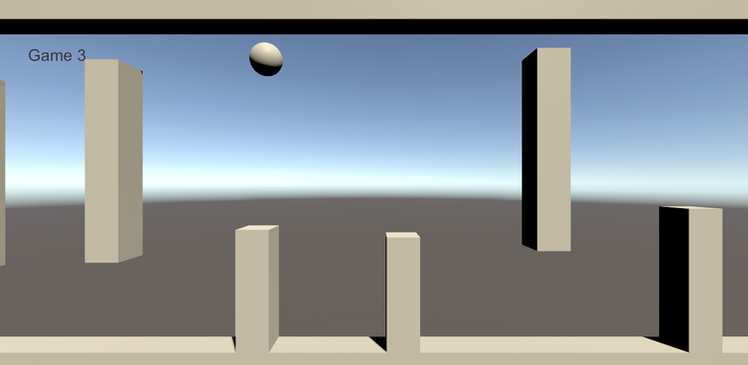
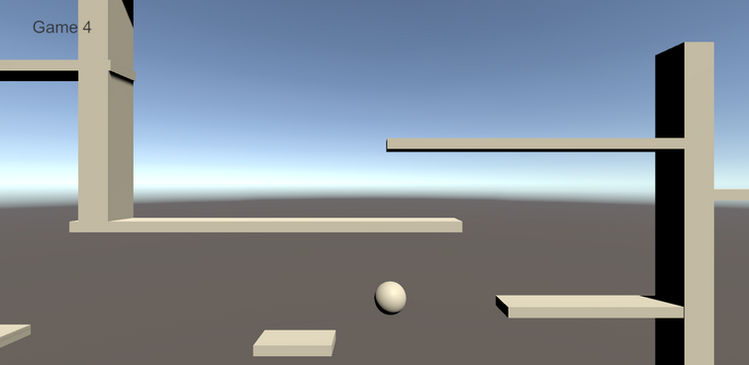


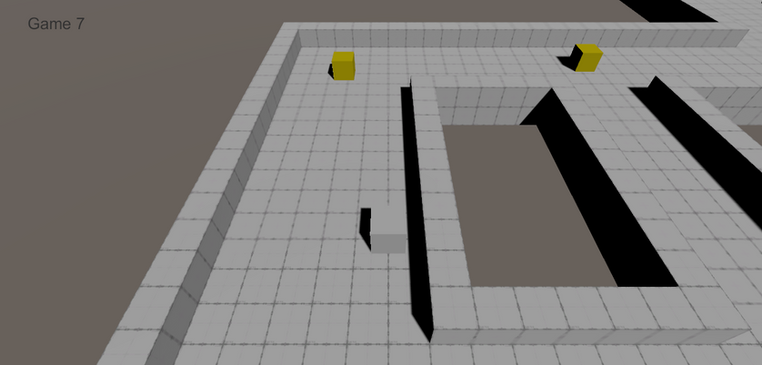
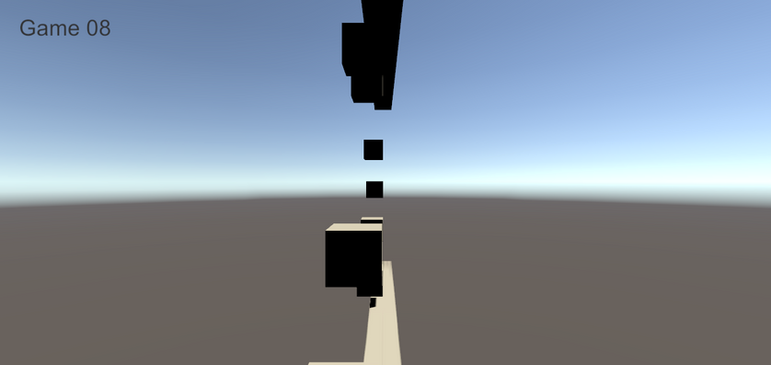


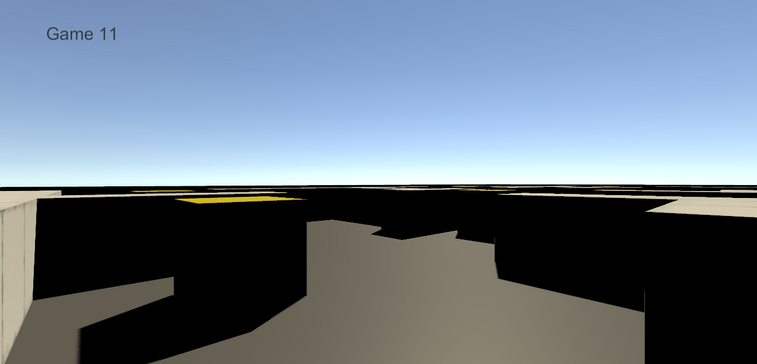






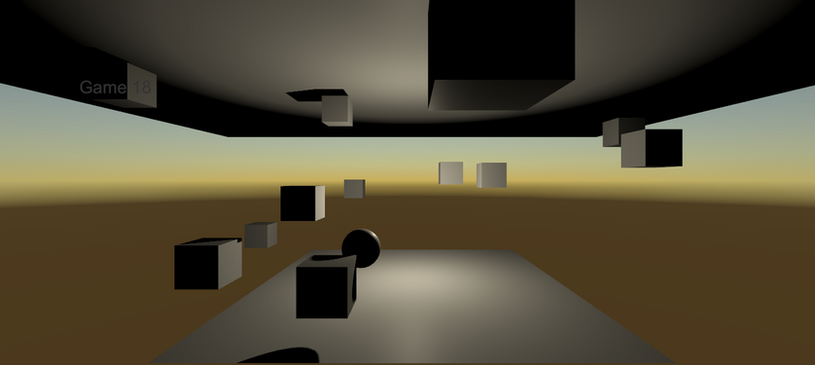
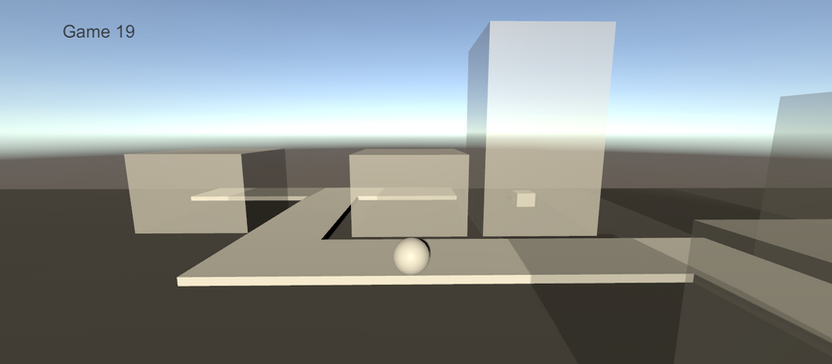





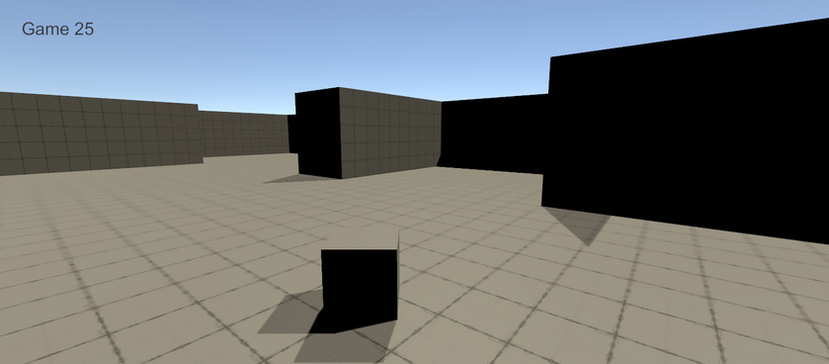
An experimental project that explores:
- Taking similar mechanics and putting them into different game designs
- explores different player controls
- Explore different game Ideas
Number of builds made:
30
Click on any image to expand
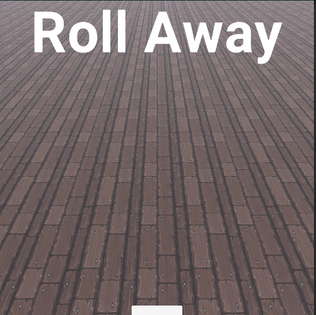
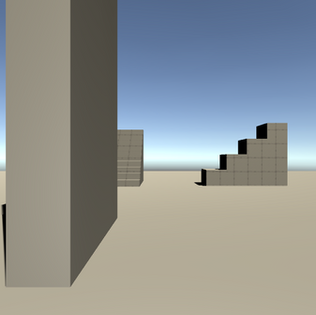
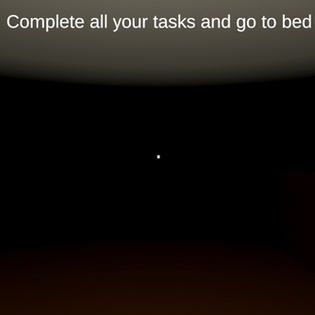
DESIGN
Ubisoft 2023 Next Game Design Submission
This is my second Ubisoft Next game design submission for 2023. the challenge was to create a new enemy archetype for any FARCRY title and make sure they fit into the game's world.
The project was done within the span of a month and it was much more challenging than last years game design competition and it was interesting to tackle an enemy type this time.
I will be talking about how I came up with the idea, what problems I ran into, and how I figured out the issues.
Making an enemy archetype was definitely a challenge to say the least. The most difficult part was just trying to come up with an idea that hasn't already been thought of in a FARCRY game and adapt it to another title. While looking at the existing roster, I noticed that there weren't really any recon archetypes that would also add buffs to their allies that would give an enhanced challenge to the player while also adding to said experience.
This year's competition was definitely fun and refreshing as the change in direction had me think in a completely different way and I enjoyed it. A really nice change to the rubric for the Game Design challenge was the increase of slides that I got to use which allowed me to expand more on my idea compared to when I created my previous submission (FARCRY 3 AI companion: further down in Design).
It was a fun and unique challenge and I got to learn more about creating an enemy type in games.
JUST TRYING TO FIND IT
If you can't tell by the title, just trying to come up with an idea was a challenge. When I got the brief for this year's design competition, I knew I was in for a challenge. The first thing I did was look into the existing enemy archetypes and figure out an archetype hasn't been made yet. This was easier said than done, as some of the ideas I had were already made in the game (or so I thought, or I wouldn't be talking about it). I had an Idea that involved a flying enemy, but it has already been done in FARCRY 6. I thought of a botanist character that can create medicine for their allies, but that was done in FARCRY 5 as a Chemist.
Many of the ideas I had were either already done or some form of it was already done. I was a losing a bit of hope, but that was when I found the Idea of a close range melee enemy that also serves as a sort of coordinate that tells their allies where the player is while also focusing on stealth. I thought it was a great idea, it was new it introduces additional challenges to the player, and it was already made in FARCRY 4, in a way.
I was a bit bummed when I first learned about this, but only part of the idea I had was made. They had close range melee enemies, but they didn't use stealth to their advatage or alerted others about the player. Even though the idea was already made, I was able to modify the initial idea and create a new enemy archetype from an existing one. After making several adjustments to the concept, I finally had my idea.
I introduce you to... the Coordinate Archetype
Redesigning the enemy
The next issue was deciding which game the archetype would work best in. The original game I planned to place the archetype in was FARCRY 6 as the archetype could be a cowardly general that hides and yells at his tropes. That idea didn't work, as the general title was used for some of the antagonists for the story and that the idea wouldn't stand out from the archetype made for FARCRY 4. That was when I looked back at FARCRY 3: Blood Dragon, and that's when I was able to make the archetype fit in. With the game's setting and the enemies taking the form of cyborgs, it became a match made in heaven.
I did have to make some modifications to the archetype to fit into the world of the game, but it worked in my favour as some of the abilities would work with the forms the enemies take. Because they will take the form of cyborgs, they can transmit the players position to their allies and use stealth to avoid getting spotted by the player, they will also add an awareness and reactive buff that will improve their situational awareness in the game just like the original idea.
The only change I added was that if the coordinate dies, not only do all enemies lose their buffs, but non-coordinate enemies have a chance to malfunction that can result in rash actions such as firing uncontrollably or the immediate activation of their self-destruction mode. By making these changes, I was able to make my enemy archetype and complete my submission.
Since this was my second try at the Ubisoft Next competition, I had some idea of what to do. This time, however, I had to make a new enemy archetype. This was a complete change to last year's game design challenge where I had to make an AI companion, which was a different journey. Instead, of making something that helps the player, this year's challenge has designers try to make something that acts as a force against the player. This introduces a completely different set of challenges and questions that needed to be answered.
-
2023 was the last year that Ubisoft Next introduced the Game Design Category
-
Challenge: design a new AI archetype for any FARCRY game
-
Duration: 1 month
-
-
The first problem (most Difficult): Finding figuring out what has already been made and what hasn't been made
-
A lot of ideas were generated but most of them had a version already made: flying enemies (FC6), botanist (FC5), melee enemy (FC4)
-
-
The first solution: Combine different parts of different archetypes to create a brand new archetype
-
While most archetypes were simple, combining them helped create a new archetype that wasn't seen before
-
-
The second Problem: deciding which FARCRY game the Archetype would work in
-
Most titles had some form of the enemy while others wouldn't fit in at all
-
-
The Second solution: pick the most futuristic FARCRY game (FARCRY3: Blood Dragon)
-
The setting takes place in a timeline where the enemy would fit in very well and would also give the player a reason to eliminate first
-
By adding additional features like enhancing enemy AI and effect when eliminated helped the archetype fit into the games world.
-
Deconstructed Video Game Mechanics Vol. 1
Click on the underlined words to learn more
De BLOB is a puzzle platform game where the main character blob joins forces with the colour underground to fight off the INKT Corporation to take back Chroma city and their colour. Players take control of Blob and roll through levels returning the colour back and defeat inkies in the process.
This is the core mechanic of the game, where colour plays a key role in the game. In order for Blob to colour a building, they need colour. To be more specific, Blob needs to have colour stored in him in order to colour his environment. The way the colouring works is when the Blob rolls over a paintbot, they receive a set amount of colour points (these also act as health in the game). As long as Blob has colour points and is coloured (not transparent), they will be able to return colour to the city.
While the Colour mechanic is a core mechanic, it can get pretty tiring to see the same plain colours on different objects over and over again. That is where the styling mechanics come into play. Styles are collectables that are scattered throughout each level. When a player collects a style, they unlock a pattern that is then used on buildings when they get coloured. The more styles the player picks up in a level, the more patterns they unlock to stylize the buildings.
The colour system only allows the player to have 100 colour points at a time, this encourages the player to look for more colour bots and to mix colours with different colours that are found throughout the levels. If Blob has 0 colour points, they become clear and can not colour any more objects and needs to find a colour source. Blob can lose colour points if they get inked (by falling into an ink puddle or getting hit by INKT enemies) and don't reach a water source. This will continue to drain BLOB's colour points and destroy them if the colour points reach 0 while inked.
Breaking down these mechanics was pretty simple and easy once you take each part and break them down into smaller components. The colour system can be broken down to the colour mixing mechanic, the colour gauge, and the style textures
The colour mixing mechanic only uses seven colours: blue, red, yellow, green, purple, orange and brown. Within the levels the main colours you'll find in paint bots are the primary colours, red, blue, and yellow since they can not be created when mixing. In order to trigger a colour mix when a new colour is collected, a switch statement is used to check what colour Blob is and what colour has been collected. If the collected colour is the same as the current colour Blob is, then no change is needed. Otherwise, check what the new colour is and create the new colour accordingly.
COLOR COMBINATIONS
BLUE + RED = PURPLE BLUE + YELLOW = GREEN RED + YELLOW = ORANGE
PURPLE + YELLOW / GREEN + RED / ORANGE + BLUE = BROWN
The colour gauge serves both as a counter and a health bar, when ever Blob destroys a paintbot, depending on the size, it will add a set amount of colour points to the gauge. This shows the player how much colour (points) they have left, if they have enough colour for to clear a landmark, as well as countdown when Blob gets inked. This also serves as a colour indicator to show the player what colour Blob currently is. The gauge uses an integer that is modified with a public method that adds to the variable and caps off to 100 when going over. The ink countdown is done with an enumerator that is triggered when Blob collides with anything that's ink, which takes away colour points ever second Blob is inked and stops when they collide with water. The gauge also decreases when Blob hits an object that doesn't match their colour or when the player is cleansing a landmark.
While the styles aren't colour related, they still play a small part in the colour system. When ever a style is collected in a level, they unlock a texture pattern which gets added to a list. This then gets applied to texture-valid* level objects randomly* when Blob collides with those objects, along with the colour. The list resets at the start of every level to encourage level exploration. It's a simple system that helps expand the colour system by giving the players a fun scavenger hunt to stylize their play through.
* certain objects that can show the textures
Prison boss VR is a VR stealth crafting game where players have to craft contraband items to complete tasks and escape prison.
During the day, players can receive or buy new materials and equipment to craft contraband items that make illegal crafting easier, and spend the night crafting contraband without getting caught. This creates a relaxing but tense experience as you try to craft contraband items while also hiding them from the wardens. If a warden finds any contraband exposed (whether it's completed or not), the player loses a portion of their contraband. That's where equipment come into play as they allow the player to not only craft new items (i.e. the sink to access water) but to also provide hiding spots for items as well as storage to hold more things. Players will need to utilize the equipment to aid them in crafting more items in order to escape prison.
In order for the player to escape prison, they must craft contraband items to complete job orders to gain reputation to unlock the final job orders for the escape. As the player gains more reputation and hit reputation milestones, new contraband recipes and materials are unlocked for the player to make (for other jobs), while also adding more challenge. The jobs also rewards players with more materials upon completion, which gives players more motivation to complete these jobs to allow them to save their cash for other materials and equipment.
The mechanics in Prison boss VR are very simple but become very complex when you break down each part. The crafting mechanics alone comprises only two parts(which both work together), and even that can get very expansive.
In order to craft a contraband item, you need specific materials, while other games just ask for specific ingredients and the item gets made, this is not the case with Prison Boss VR. Certain actions need to be performed in order to make the item. However, not all contraband items are the same, and some require different actions and items just to reach the next stage of crafting. Take the cigarette and erotic letter as examples; while the cigarette and letter both use paper, Their crafting stages are completely different. The cigarette requires the paper to be torn, while the letter just requires the paper to be written on. This falls under the main mechanic, as different items will require different processes to make them.
Trying to program each item stage would already be a challenge and undertaking, as a lot of the materials are used in multiple items and use the same actions. This task can be made easier by creating a single script that contains all the actions. While every item, whether it's the base materials, a contraband in the making (contraband phase) or the contraband itself can all have a list that can be added or reduced. Each list element will contain an action, which is also paired with a result item or items after completing said action.
In order for the AI to work in the game, you need to understand the level layouts. While the player is always inside their cell, the map is much larger, not only to give the feeling of a prison but also give players several advantages. This takes the form of a ring-like room where players have a bird's-eye view of the wing door so that they see the wardens coming and passing by, this also means that players will also be able to identify where the warden is and coordinate their next move. Later levels get more challenging where the player will have to deal with more wardens as well as losing sight of them.
The Contraband detection system works a bit different from other games. Instead of the AI detecting the items, it's the items that do the detecting (bare with me). The AI wardens in the game can only catch the player if they find any exposed contraband item while passing by. However, the player is going to have more than one item in their cell and having the AI scan the room so many times will be taxing on the CPU. Instead, the items themselves will shoot a ray cast from their point to the wardens and the second a warden passes by, and the ray cast hits them, the warden is alerted. This saves more time and resources as the warden doesn't have to scan every part of the room as the items are always trying to look for them.
Balan WonderWorld "Remake"
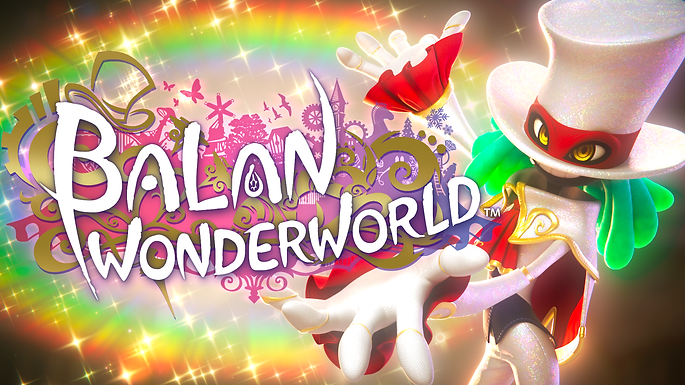
Image from Square Enix
Balan WonderWorld is an action platforming game about two kids (Leo and Emma) that get teleported to a realm of fantasy and Danger by a mysterious person by the name of Balan. The game was designed by Yuji Naka (worked on the original Sonic the Hedgehog) and published by Square Enix, who also developed the game alongside with Arzest. The game was released in late March 2021 on all platforms, with mixed reviews.
It was fair to say that the game needed more time in development or that the game needed to be revised, but despite launching in such a state, the game was still loved by many even if reviewers say otherwise. However, during development, things were not going well in WonderWorld. Yuji Naka was removed from the project for addressing issues about the game's state, knowing perfectly well that it far from being ready. This decision hurt both the game and company as it was clearly rushed to have an MVP (Minimum Viable Product) out the door.
The sad part is that the game has a lot of potential, but because of the circumstances, it didn't have a chance and not a lot of people saw it. Which is why I believe the game deserves a remake, and I will explain how it can be achieved.
Note: please be advised that this is just a overview of what I would do if I was to rework a project. This is not to undermine any of the developers who worked on the game or saying that it's easy to develop a game. I know game development is hard (I've studied it) and it takes time to develop a game. This is more of a "what if" project to understand the game's design and what could be done different if the game had a remake.
NOTE: the controls will be designed for gamepad controls
While most of the controls are fine such as the move, look and the costume switch, unfortunately there is one part of the controls that take away: The ACTION buttons (you'll see why). I am still recovering from the fact that this game uses SIX buttons for a SINGLE action and when the player uses a costume that has an action (either an attack or special move), it takes away the player's ability to jump (See base Gameplay for more info) which if you haven't noticed is an integral part of a platforming game.
This really hurts the game as not only is this button scheme used for gameplay, but also menus as the ACTION buttons are also performs SELECT, I can't tell you the number of times I almost quit the game in the pause menu because of this (see UI/UX for more info). It's as if you're trying to make a game as accessible as possible while making the game less accessible at the same time, and it really takes away from the gameplay. It's obvious that having too many controls can take away from the game, but this case shows how, sometimes, not having enough can be worse. This problem can easily be fixed by giving each button or a pair of buttons their own action, things like a dedicated jump button is a start as BW is a platformer and jumping is essential here.
All the costumes in the game are (mostly) unique, some of the costumes have attacks while others use the First person camera view to prep their abilities so giving a pair of buttons (i.e. the B and LT buttons or the X and RT buttons) the assignment of main attacks will open up the ability to do attacks while also giving another pair of buttons the ability to enter first person view. While the player costume rooster is fine with having just two buttons to move back and forth between costumes, it is far from perfect. Adding a button to open a costume menu to access more costumes (read main gameplay) will help with the player experience as this will give direct access to the internal roster and help eliminate any frustration that the current costume roster has.
The tims are bird-like creatures that help the player during their play through by bringing them items and distract enemies. Sometimes they'll do these tasks on their own, but sometimes you may need them, but they don't come. By using the directional pad's buttons to call tims and give them commands, this will expand the tims capabilities and utilize more controls.
In addition to the main controls, while photo mode is a great option for players to capture their in-game experiences, implementing a button to open the photo mode will also help improve the player experience. As this would eliminate the need to have a button in the pause menu, as it is just taking up space and is just adding more unnecessary steps for the player. (See UI/UX for more info)
When looking back at the controls now, it was clear that the team was only using them as temporary controls rather than the actual ones. They feel like they were just there because the team were trying to figure out the game was supposed to work and the controls were supposed to be changed as they learn more, but that never happened. Because of the production's timeframe, work efforts were sent else where on the game and the controls were never changed.
Click on the image to expand

Balan's Bouts are challenges that are hidden in every level, player's have to look for Balan's hats in order to access them. They mainly comprise quick time events with either pressing a button at the right time or mashing as many times as possible. If the player hits all the QTEs with excellent's (perfects in the game) then they would receive a Balan statue. While these were meant to be short mini-games, it's clear that there was supposed to be more, and they were rushed together. The cutscenes aren't even aligned with one another and just jump from scene to scene.
Looking at these challenges, they almost feel eerily similar to SEGA's Night's (improvising here) if not similar. In spite of having some cutscenes that almost look like copies of the Night's franchise feeling very similar to another franchise, there is still room to differentiate and become more coherent with the rest of the game.
While the gameplay in the bout challenges are the same (button timing and mashing), Balan is seen doing a range of actions, whether it's breaking debris or dodging Lance (the antagonist of the game). These actions can be integrated into different challenges such as a mini boss fight with lance (Night's fight) or trying to reach a core while also dodging obstacles and sometimes destroy them (like a sort of on rails game). Balan's melee and dodge moves can be done without restriction, while the fireball and dash abilities require mana/stamina (which re-generates slowly) in order to use, since these would be the most powerful abilities for the player to use for the challenges. The main reason for adding a mana/stamina requirement is to an add additional challenge for the player, but also to make sure that they do not "Cheese" the challenges.
Click on either image to learn more about each gameplay style
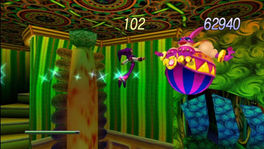

When looking back at the game and seeing these issues, it's clear that these challenges were supposed to be in the game, but they didn't have enough time to be properly setup. The team must have rushed to get the challenges finished and ready to launch that the cutscenes didn't align with one another. This just shows that the team needed more time, but upper management didn't care and just wanted the game out.
The costumes in Balan Wonderworld are one of the core elements of the game. You need to use costumes to traverse through the levels and to find Balan statues. Which is why it is very heartbreaking to see the core mechanic here.
As the game suffers from its own controls, the costumes are one of the worst victims to suffer from it. Since BW is a platforming game that involves a lot of jumping, it's confusing to see some of the costumes not have the ability to jump as they are replaced with the costume's ability, even though some costumes have a sort of jump in their ability, most of them are more like launches and don't really count. This is one of the results from the poor control scheme, as the game has SIX buttons for action, which is already excessive to the extreme. With an improved control scheme (See PLATFORM CONTROLS) which can allow two different abilities to be used, and it gives each costume more unique uses to tackle the game's levels and puzzles.
Costumes are scattered in each level in crystals for the player to collect and use, however they can't be picked up right away. In order to collect the costume, the player has to find and collect a key in order to break the crystal holding the costume. This way of collecting costumes is a completely redundant system, as the keys are an unnecessary step and make absolutely no sense. The keys can be used on other elements in the game (like doors and safes) but not for costumes.
While playing the game and collecting costumes, I noticed a lot of the costumes were either similar to each other or are direct copies of them. For a game that offers up to 80 costumes, they neglect to mention that they are 80 VISUAL costumes, most of them are either upgraded versions, or direct copies of each other with some to no difference. Some of them just don't fit into the game or the world their in, example? The box fox, this character can jump but turns into a box when ever it feels like, (I am not kidding, this is what the costume description says) this costume in chapter 4 which is a sky based world. Because of these unnecessary costumes, the developers tried to implement their uses into the level design for collectables to make them at least useful, however this is just extending the costume's life support which does not last very long as more costumes are discovered. Removing these costumes and focusing on enhancing the remaining costumes can really help the game and would make development easier as they don't have to deal with duplicates.
If a player wants to use a specific costume, they have to make sure they at least of one copy of it in their roster. It means that players have to constantly collect additional copies of every costume to make sure they can use it in another level. If they reach somewhere in a level that requires a specific costume ability, but the player doesn't have it, they would have to repeat the process to acquire the costume and try not to get hit while wearing the costume in their three costume holster. If a player gets hit by an enemy with a costume, they lose that copy and some of the costumes only appear in one spot in the whole level and players can only have two copies of the same costume anytime they're in a level.
While thinking back after playing the game myself (and still working through getting 100%), it became more clear that the costume system was still an alpha phase and was supposed to be developed even further. The team knew about the costumes and the changes the system needed, but were stopped, most likely because of the higher ups saying that it would be good marketing for the game. This is just my speculation, with confirmation that things were not going smoothly by the original creator
Hey there, just talking outside here. I plan on creating a new version of the costume system to see what could have been different. Keep in touch to see more
If you played the game, then you are very familiar with the SIX buttons that do the exact same thing (you'll be hearing this a lot). During the whole game, players have to deal with a control scheme that only allows them to perform a single action (multiple if the costumes utilize the hold button interaction) and have to deal with the constant fear of loosing costumes, which is also part of an awful health system. Unfortunately, this design also hampers other aspects of the game, including the actual experience, and also shows how rushed the game was because of troubled development. However, by readjusting and changing different factors in the gameplay (along with changes in other factors of the game), and the true potential can finally open up.
One of the main (and most mandatory) change needed for gameplay is to make the jump action a separate action. This may sound strange to those who never played BW*, It's (sort of) common sense to have jumping in a platform games, especially when you start on the first level of the first world. The problem with the jump in the game is that's tied to the six action buttons, these buttons all do the same action. It's fine for most of the costumes, emphasis on most. It's because a handful of costumes in the game replace the jump with a different ability, leaving the player jumpless. This is a problem as there are levels where the player needs to jump and can not progress without the ability (play chapter 10, and you'll see why). Adding this will greatly improve the game and fix these problems.
As the game has a wide range of costumes to use, you may think it is hard to choose from, you would be wrong. Even though players may pick costumes depending on their abilities, there are some that look like they can do multiple tasks (E.i. X-ray ape) but are only given a one ability and maybe jump. Thanks to the six button control scheme, this limits a lot of the costumes in the game and makes the whole experience more annoying.
The costume holder/health bar needs to go, when you combine a health system in which you lose a costume when you get hit and die when you get hit without a costume, not only did you make a bad costume system, but players will get agitated as they have to be extremely careful when navigating the level's and fighting enemies (which is a whole other problem to deal with). By replacing this system with a traditional health bar can easily fix these issues.
* Short for Balan Wonderworld
NOTE: This section will be discussing controls for a gamepad controller (Playstation, Xbox, Nintendo)
With new bout challenges comes a new set of controls, the old controls only use the ACTION buttons since gameplay only consist of quick time events. These versions require more complex but simple controls to account for the new gameplay.
As the new versions now introduces movement, both control sticks can be used to move Balan around as the look mechanic is not needed. As for the attack and movement abilities, Balan's dash and melee attack can be mapped to the face buttons as they will be the actions that the player will use the majority of the challenges. Balan's 'fireball' ability can also be added to the face buttons as this will give each button their own action and avoid the original control scheme (six buttons for one action). The dodge mechanic can be mapped to the shoulder buttons. The dodge can be used in two ways: it can be used as a parry ability (player presses either button) when they are about to hit an object and as a directional dodge (the press the dodge button as they move in any direction).
If you were paying attention to the number of buttons used then you would have noticed that both trigger buttons, the directional pad and one of the face buttons are not assigned, there is a reason for that. These unassigned buttons are used to accessibility, since the dodge has two buttons assigned and the other abilities only have one, this allows additional options for alternating the controls. For example, you can have the dash and 'fireball' ability assigned to the trigger buttons or if the player is left-handed, they can also map the abilities to the directional pad.
Since the bout challenges have very few controls in it, it gives the player the ability to map the controls to how they want them to be and makes it easy for anyone to pick up and play.
Click on any image to expand


The user interface plays an important role in every game, as they display information to the player and allows actions that are not gameplay related (options and settings) to be performed. However, as UI and UX play an important role in every game, it is also very easy to mess it up and anything can contribute to the problem.
As I mentioned several times in Gameplay, the original control scheme with six buttons performing a single action created a lot of problems in the game, and these carry over to the UI/UX. The six buttons are all used as select and because of this there is no back button, this means that in order to go back to the previous menu screen, there has to be a back button and the only time a back button should be used is when it's when a mouse is used, which is more than 90 percent of PC games. When it comes to console games, there is a back button in the controls to make navigation easier, the original control scheme didn't have that and the console versions suffers from that.
If accessibility was the main goal for the menu controls, then this approach just took it in the opposite direction because of the ill-mentioned control scheme. A better approach would be to use the button scheme from the Ape Escape series, in the Ape Escape games, the face buttons were split in half with one pair functioning as select and the other pair for cancel or back. This button scheme can be used and expanded to use the trigger buttons, however three is the number of how many buttons can be used for one action. No more, but can be less. This scheme also comes with the benefit of having the option to switch the scheme layout for players that prefer other buttons for select and cancel/back.
While UI navigation can be fixed with a few modifications, some of the menus need major changes. As I mentioned early about the back button, that can be replaced (on consoles but added on PC for game pad players) with a button scheme change option for accessibility in the option's menu. The pause menu however has an interesting but strange design which involves the 'miscellaneous' button. This button hides another set of features like save and exit and is just an unnecessary step to have. While a lot of games have a photo mode built in them (including Balan Wonderworld), this feature can also be mapped to a button on the controller/keyboard, removing the need for a button in the pause menu.
Some of the UI in Balan Wonderworld need a few fixes in order for the UX to be fully realized. There are some UI elements that need to be redesigned to account for new features, such as the in-game HUD (see Gameplay-Base Gameplay for more info) while new UI is needed for the costumes (see Gameplay-Costumes for more info). These changes and additions can help improve gameplay as well as the overall player experience.
As I mentioned before, a lot of the problems were already known by the team, and they wanted to fix these problems, but they were not given enough time and the problems were shipped with the game
In order to have a good platforming game, it needs to have good levels, and good levels need good level design (see where this is going). Balan Wonderworld's level design unfortunately is anything but that and suffers greatly for it, and one of the major factor that impacted this are the costumes. Every level is designed to be compatible with all the costumes which majority of them have problems of their own, but because of this, the level designs were short, messy and contain level obstacles that become redundant because of certain costumes.
The costumes already had a number of issues, and they conflicted with the level design in a number of ways, level navigation is one of them. As players progress through the levels they would find costumes along the way and some of their placements are just ridicules. This is clearly seen in the chapter 10 levels where the placement of a costume with a jump ability was placed at the top of stairs that you have to jump in order to get while at the bottom of the stairs, a costume that doesn't jump is placed. Did you see what is wrong? Some item placements in many levels don't work at all, and sometimes it may require the player to backtrack in order to progress. This is a problem can be easily resolved with a simple revision to make sure that the obstacles are accompanied by a costume to overcome them, not the other way around.
As expected in platforming games, you are expected to navigate through obstacles to reach the end while also searching for collectables throughout the levels. The levels in Balan Wonderworld however, have obstacles that can be overcome with costumes that break the game in a number of ways. Example, the lava in chapter 11 can be ignored with the ghost costume which floats above the lava and never touches the ground once. This is a shame as all the levels try to wrap around only a few costumes which works most of the time (if the costumes are even useful), but the moment when other costumes get added in, it can break the level entirely or partially. Unfortunately, the only option is to completely revise the levels and focus only on a select few costumes, while also making sure they don't break the level at any point.
After playing through the game for the first time, it was sort of easy to see that the designers were trying to make the most out of the costumes to increase the game's replay ability. Since a lot of the costumes are duplicates, this means that they only have to focus on the abilities and use them around the levels while focusing on the main costumes for that chapter. This is also very apparent as the levels were very short to make up for the costume issues. It was still a difficult task as there are sections where a good chunk of costumes couldn't get through certain obstacles and all the levels had to be made in such a short timeline. The levels can all be completed with only the costumes that are found in the levels which was the main goal, but with some revisions and polish, the levels can really spark a fire.
Every game has their own unique mechanics that make them stand out from other games and create new experiences for players to try, this also makes them difficult to use at first as players who have never seen or used these mechanics before.
This is where tutorials come into play. They help guide players on how to use the game's mechanics to complete certain objectives in the game, whether it's to complete a task or jump over a gap in a level. Now a day's they aren't as prevalent as before and many games now create simple starting levels that allow the players to discover the controls and mechanics. That or the audience has grown so used to the controls that they can pick up the game and immediately know the controls.
While Balan Wonderworld has fairly simple controls with it being a 3D platformer, but for a game that is geared towards younger audiences, it would have made sense to add a tutorial in the game to explain the controls. While it is fair to assume that a 3D platformer has simple controls, it's not the same with the audience, as the young audience would have less knowledge on the genre and may have a hard time to understand the game. The only time that the game explains any of its mechanics is when a player unlocks a new costume and that's the only thing that gets explained throughout the whole game. They don't mention how the tims and gems work in the game, which I was very confused as some tims were growing and changing colors with some that start to have badges. I had to look up a video which mentions how they are used to acquire a secret costume, but without any explanation on how the core mechanics work, I didn't even notice or figure it out without a explanation.
It's understandable that the developers did this for the sense of discovery which is common in many games, but without any form of tutorial or explanation it can have a different effect. This was most likely due to the rushed production schedule that didn't allow any time to add or polish the game or use feedback from the demo that was released six months before the full release. Aside from the lack of tutorials and explanation, the overall player experience is not positive. With the aforementioned costume mechanic that is also used as a health system along with the controls (original), players may feel annoyed and frustrated, and that's a feeling no one wants.
Along with the changes and adjustment I mentioned in the previous aspects as well as adding a few tutorials to teach the player the base mechanics and systems can help improve the player experience.
In Progress - come back another time
In Progress - come back another time
In Progress - come back another time
In Progress - come back another time
pros
-bosses match with the character's internal conflict
I have to admit that I really enjoyed the art in the game as I was able to understand what the game was going for
cons
- story connected to them
- Bosses are too short (three hits and done), no health bar
- balan trophies connected to using different ways to deal damage (not mentioned anywhere and some are easily missed)
Changes
Make the bosses
Saying that Balan Wonderworld was a disappointing game would be an understatement. There was genuine passion and effort put into this game by the developers, and they wanted to make it as magically as if someone was playing a video game for the first time. Some people did see that, while others completely forget about it because of everything else. Due to a tight schedule with no room to delay the game, the team had to get a minimum viable product out the door, knowing that there was still so much work to be done. Yuji Naka addressed these issues, knowing very well that the game is not ready, but not before he was promptly fired prior to the game's launch. The team really wanted to make the game the best it could be, but what came out was not a lazy and unfinished cash grab, it was a passion and dream filled game that has yet to fully expand on those features. While playing, I enjoyed the art work for both the characters and worlds which stood out to me, and I was able to get the full picture of what it was trying to be.
As I continued playing the game, not only was I thinking of solutions to some of the problems, but also why the developers may have made these decisions. Some made sense while others don't, the ones that didn't were the ones that the developers didn't have time to fix or couldn't get to due to time restraints. If the developers pulled a Dying Light 2 in which they announced that the game will be postponed indefinitely, which in and of itself sounds like a jerk move, the developers would have more time to make needed changes to the game. With these adjustments and changes, this is why I believe that Balan Wonderworld deserves a second chance and get a remake to become the game it was meant to be.
After I finished the game, I tried to look into development of the game. Unfortunately the only source I found about the development of Balan Wonderworld was the twitter (now X) post from the former creator Yuji Naka made after the launch which explained why the game was released as it was. While I did find some interviews with the development team, they were mainly for promoting the game and didn't talk much about the development cycle.
Ubisoft 2022 Next Game Design Submission
This is my Ubisoft Next game design submission where I created an AI companion character for the FARCRY 3.
The character was created during the course of a month in which I created an AI companion character that would fit into one of the FARCRY games. While creating the character, I learned what it is like to develop a character for a game and what issues may occur when creating one. My companion character is called Kema, and they are a king cobra snake who would aid Jason in his mission to save his friends from the pirates.
I will be talking about how I came up with the idea, what problems I ran into, and how I accidentally created a new FARCRY companion system.
Even though I couldn't fit everything I wanted into Kema, I had a lot of fun creating them. I learned how much work you can put into a single character for a game and what kinds of challenges come from them.
I had to understand more about snakes to understand their strengths and weaknesses to create Kema. While I was creating Kema's ability set, I had to cut out abilities as they wouldn't fit into the gameplay and morphed some abilities into others. Even though I had to cut some abilities, I end up creating new ones as I learned to incorporate the game's environment into them, which also helped build Kema as a character along the way.
I learned what challenges can come when creating a character for a video game and what decisions and cuts had to be made while also using those constraints to evolve the character as well.
This was a really exciting experience and I will use what I learned to create new characters for games to come.
The second I got the creative brief, I started to look up what the existing companion systems are in the FARCRY series. I was trying to figure out what character I can make that will stand out, and the first thing that came to mind was a snake. I wanted to make an animal companion as I felt that every human role that I thought of was already done before and someone else would do the same thing. The reason why I choose a snake was because of two reasons:
1) There is only one reptile companion in the entire FARCRY series - Guapo from FARCRY6
2) They would be the very first companion to have zero legs
I began to research different species of snakes to begin creating my character. I was originally going to make the snake character for FARCRY6 with poison, but there were no poisonous snakes in Cuba, and there were no snakes in the entire game. This issue resulted in the switch to FARCRY3, where the game has snakes and is located near Indonesia that also has king cobra snake. This brought the poison aspect back and the idea now has a base.
CHARACTER ABILITIES VS. STEALTH
While FARCRY3's environment provided great opportunities for Kema, I soon realized that not all abilities would work with the game. At the time I was only focusing on the stealth aspect of Kema as that was where they would shine the most. I did some research of FARCRY3 (playing the game) to understand how stealth and combat would work, and that was when I realized that some abilities won't work. One of the abilities I was going to create was called 'Snake Ware' in which Kema can hide inside the player's clothing and pass through areas without being seen.
That nearly resulted in Kema's downfall as stealth in the game doesn't expand very much in the game as it mainly focuses on sneaking in and out, luring and killing enemies and nothing else (based on what I played). However, This also created a unique challenge as I had to work around those constraints, which lead to the ability 'Snake Ware' to be repurposed for the other abilities that came.
CHARACTER ABILITIES VS. COMBAT
Stealth was an interesting challenge, but it was nowhere near challenging when it came to combat. Since I picked FARCRY3, I was dealing with a game that released before the companion system was even made. This meant I was creating a companion system from scratch and had to do it in a way that was unique for the game while also creating Kema. This was a bit more challenging, as FARCRY3 is one of the best games in the franchise (Based on IGN's article) and I wanted to avoid changing too many things in the game.
So my goal for my design submission was to create a companion that enhances the gameplay and introduces new ways to tackle missions. Since Kema is a King cobra, I created her attacks using its traits. The first attack uses her poison bite where once the enemy gets bitten, the poison will slowly kill them, this would cause the enemy to loss stability and leave them vulnerable. The next attack is a lunge attack, this will allow Kema to reach enemies that are within range of her, unfortunately, snakes can only lunge up to half of their body length which did limit the ability. That was when I created the next attack, which is the human snake dagger attack. Kema can wrap herself around the player's arm and be used as a dagger against enemies (definitely not from AC). That was when I realized that I could use this form to also help with the lunge ability to allow Kema to reach further distances.
As I was developing the attacks for combat, that was when I realized that I created a new type of companion system that was never used in any of the FARCRY games, the wearables (name still in progress).
-
First time the Game Design category was introduced in Ubisoft Next (2022)
-
Challenge: Create an AI companion for any FARCRY game
-
duration 1 month
-
-
The Plan: Make a snake companion as there was only one reptile companion in the whole franchise
-
The First problem: Choosing a which entry to make the companion in
-
Options between FARCRY3, FARCRY4 and FARCRY6
-
-
The First solution: FARCRY3
-
After further exploring each games wildlife and locations, FARCRY3 had the best environment and can be used to expand the character further
-
-
The Second Problem: How to add companion gameplay without altering the FARCRY3's gameplay
-
FARCRY3 was already considered one of the best game in the franchise and it's formula has been used in other Ubisoft games.
-
-
The Second Solution: Create the companion abilities to aid and/or enhance the player experience
-
Companion abilities create new ways to tackle objectives and aids the player with additional abilities.
-
Some ideas were scraped due to no missions that support them and some had to be revised due to the physical limitations of a snake.
-




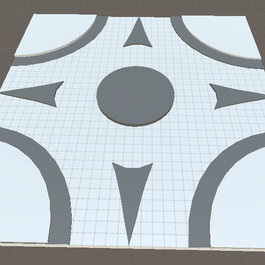

White Boxing and asset flipping - Astral Rescue
Design internship for a mobile game called Astral Rescue at Vigilance Digital Media
- created white box levels of the environment, created lists of assets and communicated with artists
- used finished assets and flipped white box assets with artist made assets
- also programmed a multi-arrow compass and a magnet mechanic
OTHER
Actor - Better Together
This was my first acting role that I ever did.
Better Together is a LGBTQ web series about Jun Jun (the main character) trying to find love. this was the third episode of the series which was the one I played a role in. I also worked with the producer to create a fake dating app for a later episode.
Better Together is a production by Unsalted Films, created by Clark Cameron Marcelo
